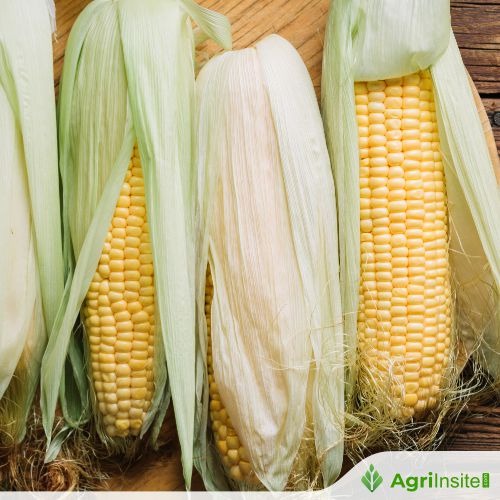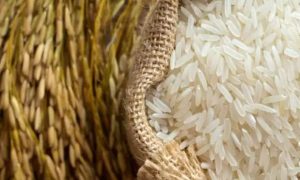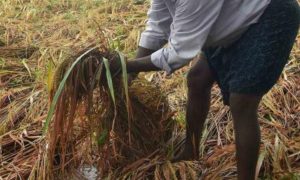Development of maize value chain in Assam

Maize farming in Assam is expanding rapidly due to rising demand for livestock feed, bioethanol, and food products like corn flakes. Though production has tripled, it still meets only half the state’s feed needs. Boosting quality seed access, reducing reliance on contract farming, and promoting maize processing can enhance self-sufficiency, farmer income, and entrepreneurial opportunities.
Maize farming in Assam has been gaining popularity, with its cultivation being pushed to bridge the growing demand-supply gap in the state. Demand for maize as feed is growing fast with growth in the poultry and livestock sectors. The state not limiting itself to growing only the cereal crop and focusing simultaneously on promoting maize processing can unlock its optimum potential in triggering new business growth besides generating employment and livelihood opportunities. Apart from poultry and livestock animal feed, maize demand has also gone up for the production of bioethanol. Over the past five years the area under maize cultivation has increased more than double, which signifies the preference for the crop among farmers, but growth is primarily concentrated only in a few districts. The spectacular expansion is attributed to its acceptance as an alternative Rabi crop among farmers in the state.
The production has also increased nearly 3.5 times but is enough to meet little over half of the total demand for feed for poultry, cattle and pigs. The official data suggests that the state is still dependent on supplies from outside to meet feed demand. As feed accounts for nearly 70% of the total livestock production cost, the state becoming self-reliant in maize production can significantly bring down the cost and enhance the profitability of individual livestock growers, dairy cooperatives, farmer producer companies and poultry business owners. Key factors influencing farmers’ decision to replace paddy with maize in some areas in the state include better climate resilience of maize compared to paddy, less time for harvesting than paddy and higher earnings due to growing demand as feed. Nevertheless, most crop areas in the state being rainfed, maize cultivation also remains vulnerable to erratic rainfall and floods. Availability of quality seeds is a big challenge for farmers. This pushes the maize farmers to become more dependent on private companies who have high stakes in the animal and poultry feed business or ethanol supplies for the supply of quality seeds under contract farming and buyback agreements.
As the buyback agreement is often based on a predetermined and agreed price, the farmers lose additional profit in the event the price of maize goes up, but the buyback agreement guaranteeing a fixed price makes some farmers find it a better option than getting exposed to price volatility and market access challenges. The collaboration between the Assam Agricultural Department prioritising quality seed distribution and technical guidance for modern farming can reduce the overdependence of maize growers on contract farming and private companies for quality and high-yielding hybrid seeds. Corn flakes with milk is gaining popularity as a breakfast cereal, driving its demand across India among health-conscious citizens, as it is low in fat and cholesterol, while fortification with other food enriches it with vitamins and minerals. It makes a quick, solid breakfast meal with no cooking required, which is another important factor driving its demand on the food table. Although multinational brands dominate the corn flakes markets, success stories of several local brands in some states have set examples of combining quality control in production, affordable pricing and marketing strategies to leverage an increase in maize or corn production. Increasing the areas under maize in the state beyond fulfilling the demand for poultry and livestock feed and bioethanol can open up opportunities for more maize processing businesses in the value chain, such as quality corn flake production by individual entrepreneurs or FPCs.
Various incentives provided under the Uttar Poorva Transformative Industrialisation Scheme for industrial growth in the northeast region, as well as incentives provided for the establishment of food processing units, have unlocked new opportunities for industrial growth in Assam and other states of the region. A range of local products from the state’s food processing sector have scripted success stories through correct branding strategy and quality packaging. Thus, the ecosystem needed for quality manufacturing to withstand cutthroat market competition has gradually developed in the state through policy and training support and credit linkage. While a shortfall in maize production is a bottleneck in converting entrepreneurial dreams into a commercially viable business, the entrepreneur can place the demand and offer a procurement price to the farmers or FPCs growing maize to motivate them to expand the area under the crop.
Past experiments of pushing alternative crops to augment farmers’ income brought important lessons to learn – instead of boosting production of a particular crop, livestock animal or poultry species, the development of the entire value chain is crucial for sustaining the success and shielding the growers from price shocks and crop loss in climate disasters. Apart from keeping the production of the alternative crop commercially sustainable, a comprehensive business model, including branding, packaging, and marketing, also generates employment and livelihood opportunities in the value chain. A clear roadmap on maize production with such a business outlook can inspire new visions among youths in the state to leverage the maize production boost in Assam.
To Read more about Maize News continue reading Agriinsite.com
Source : The Sentinel Assam














